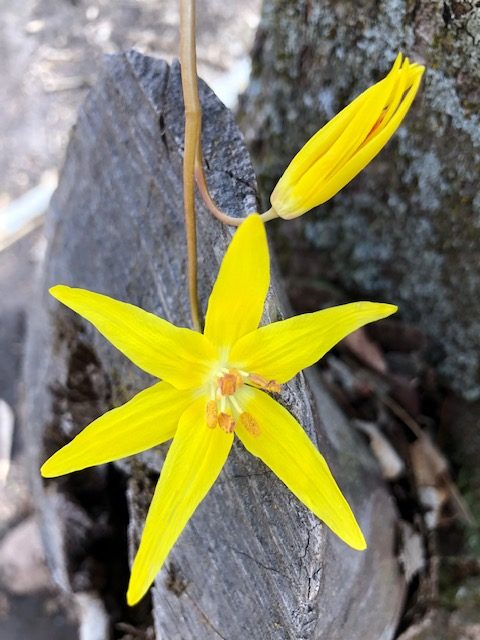
Courtesy & Copyright Mary Heers, Photographer
Then I noticed the interactive display pedestal nearby. I discovered my “butler” was actually holding a rain gauge and an air temperature sensor. In fact, there were almost 30 sensors attached to the frame. Tapping on each picture of the sensor, I could see the exact measurement it was making at the moment. More tapping and I could look back as far as 500 days ago.
This magnificent machine was recording data so smoothly that I had to laugh when I remembered how in the early days of climate monitoring it wasn’t so easy.
In the 1980’s, after moving to Cache Valley, I was getting used to the cold temperatures and wondering how cold could it get. The engineers at Campbell Scientific, including my husband Art, had just developed a new temperature and wind sensor that could record its measurements into a box. The box would then send a radio signal to a relay station on top of Mt Logan, and then on to the base computer in Logan. They installed the sensor at Peter Sinks, near the summit overlooking Bear Lake. Then they sat down in front of the base computer to wait. They watched the temp drop, -55, -65. Then a tiny gust of air would blow by and the temperature would rise. Finally, they went to bed. But the datalogger kept working. In the morning, they looked at the data sheet – and there it was in black and white: -69.3 degrees Fahrenheit! In the early morning Feb 1, 1985, a record was set for the coldest temp ever recorded in Utah that still stands today.
But my favorite memory from the early days is the farm kid who bought one of the first Campbell Scientific dataloggers, the CR10. Art and I were on a road trip when he realized we were close by. We rang the doorbell. His mother told us to go upstairs. There was the young kid sitting on his bed. The CR10 was on the floor. He showed us how the datalogger was recording the level of oxygen in the water in his nearby catfish pond. When the Oxygen level dropped to a dangerous low, the CR10 would turn on a giant eggbeater-like machine that would throw the pond water high into the air. When the water fell down, it carried Oxygen with it into the pond. The kid was all smiles. Gone were the days when he had to get up every night at 3 am, march through heavy mud, check his Oxygen sensor, and manually turn on the eggbeater.
The kid pointed to the CR10 on the floor.
“Piece of your brain in there?” he asked Art.
“Yes,” answered Art, “And a piece of my heart.”
This is Mary Heers and I’m Wild About Utah.
Credits:
Photos: Courtesy and Copyright Mary Heers,
Featured Audio: Courtesy & © Anderson, Howe and Wakeman
Text: Mary Heers, https://cca.usu.edu/files/awards/art-and-mary-heers-citation.pdf
Additional Reading: Lyle Bingham, https://bridgerlandaudubon.org/
Additional Reading
Wild About Utah, Mary Heers’ Wild About Utah Postings
Peter Sinks Temperature Monitoring, Utah Climate Center at Utah State University, https://climate.usu.edu/PeterSinks/
Tonks, Sara, Peter Sinks, UT, Was Over 50 Degrees Below Zero Wednesday Morning. Here’s Why That’s Both Unusual And Normal, Weather News, The Weather Channel, February 13, 2025, https://weather.com/news/weather/news/2025-02-13-temperature-sinks-cold-explained-geography
Campbell Scientific, Inc., https://www.campbellsci.com/
Company History, https://www.campbellsci.com/history
Franchi, John, Man reflects on recording all-time Utah low temperature in 1985, Fox 13 News, Scripps Media, Inc., February 03, 2023, https://www.fox13now.com/news/local-news/man-reflects-on-recording-all-time-utah-low-temperature-in-1985
Davis, Jim, Where is the COOLEST Spot in Utah?, Survey Notes, v. 45 no. 3, September 2013, Utah Geological Service, Utah Department of Natural Resources, https://geology.utah.gov/map-pub/survey-notes/glad-you-asked/coolest-spot-in-utah/










